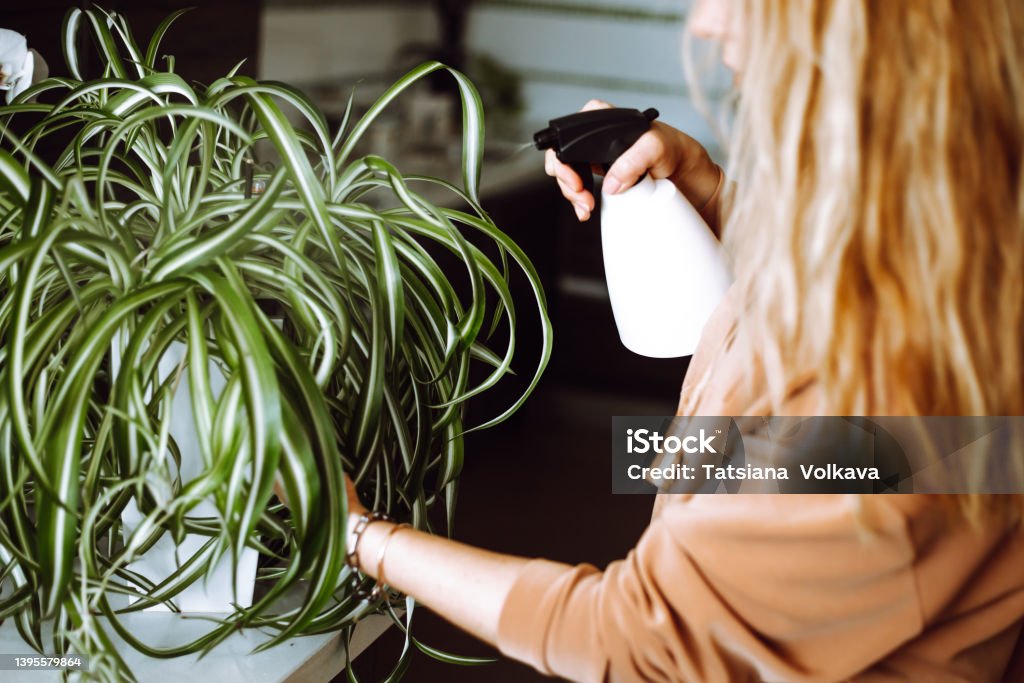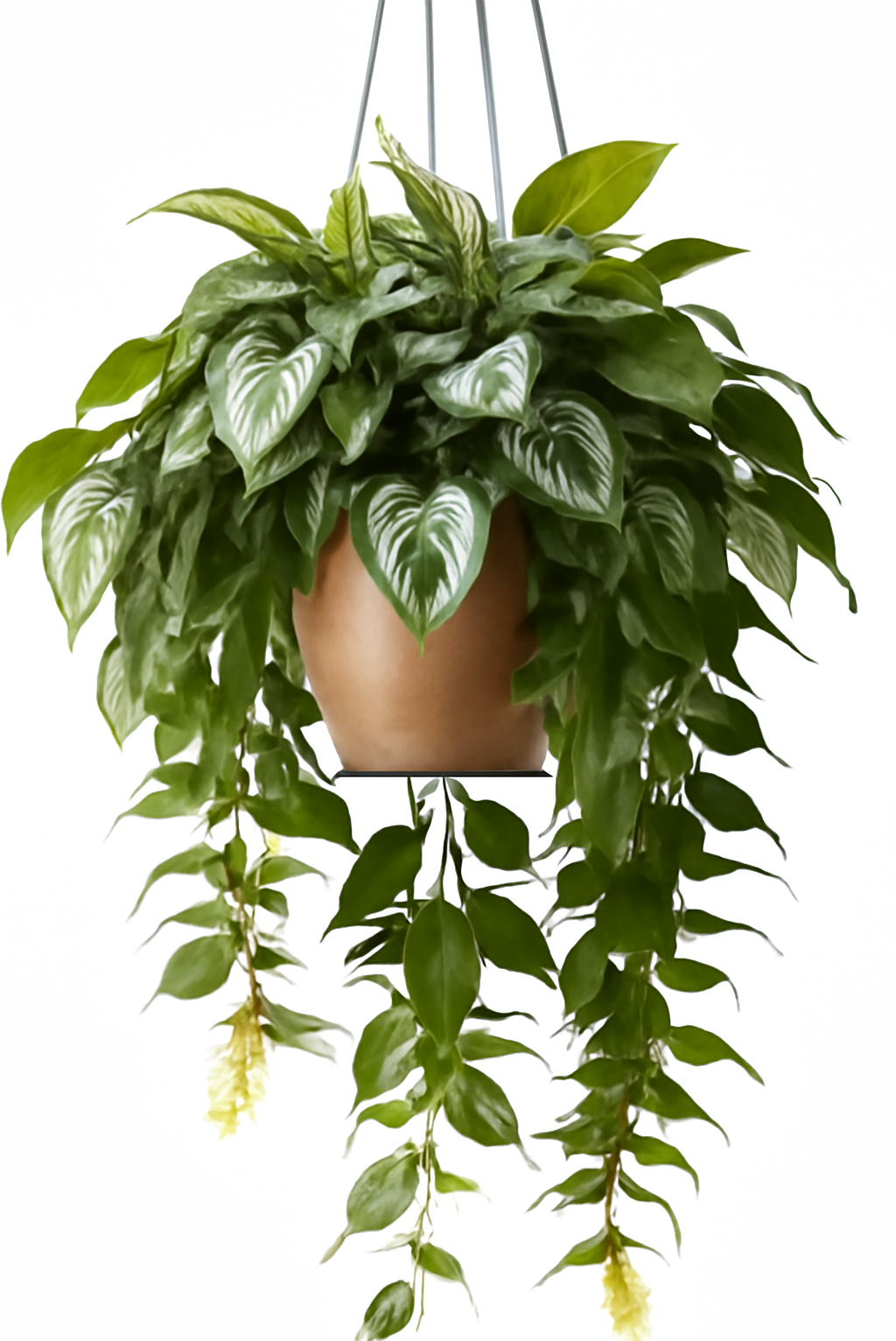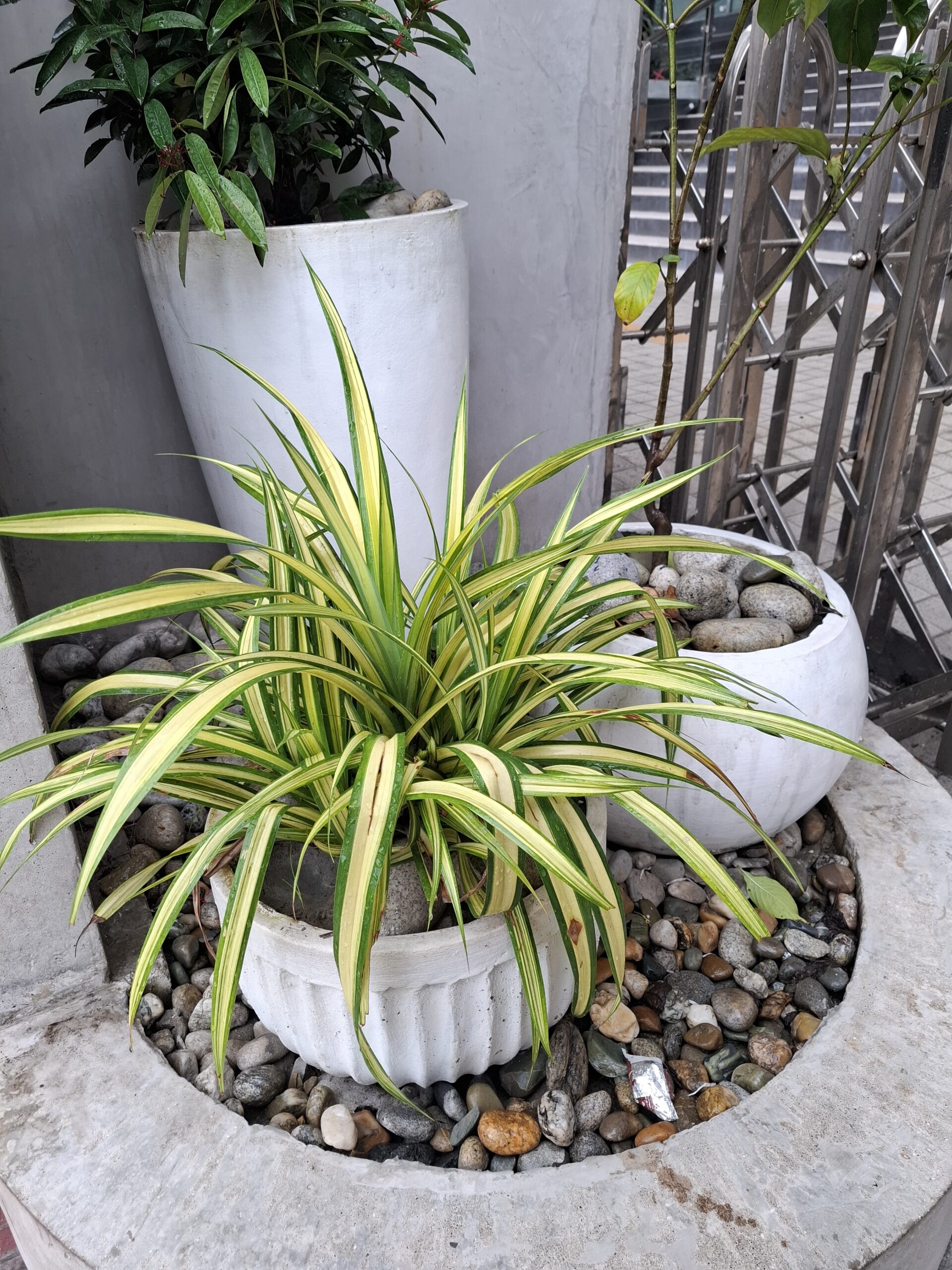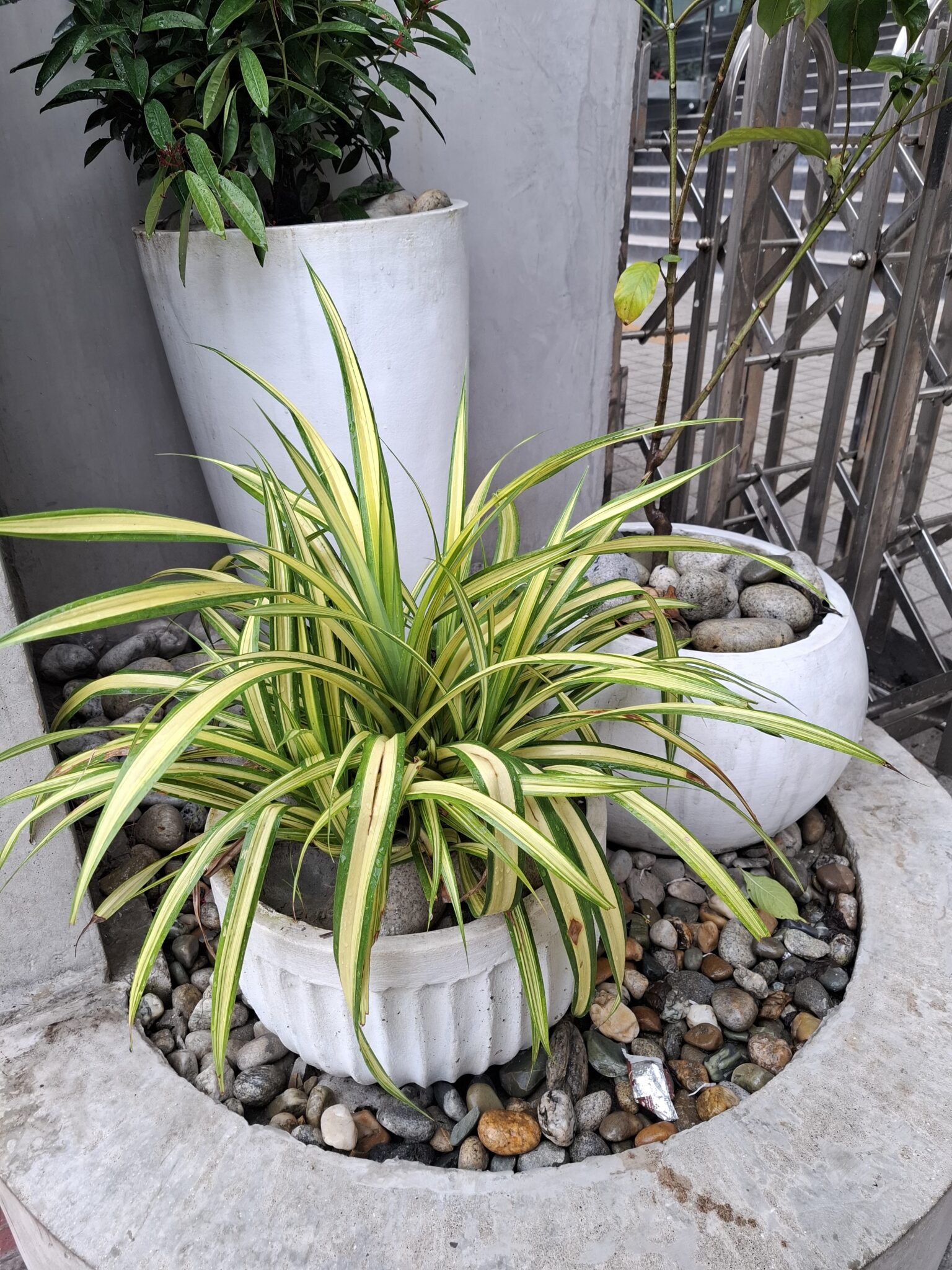12 Common causes why your spider plant is dying and how to fix it ( Expert tips)
Spider plants (Chlorophytum comosum) are easy houseplants with long green leaves. People love them because they clean the air and are super easy to care for. They’re great for beginners. But they can also get affected. If your spider plant has brown tips, droopy leaves, or looks weak, it might be in trouble.
I once had a spider plant that looked perfect. But slowly, the leaves turned brown, and it stopped growing. I felt sad and didn’t know – “What did i do wrong?”
Later, I found out I was watering it too much and keeping it in the wrong spot. Watering too much or too little, not getting the right amount of light, poor soil, or pest attacks are the main causes why your spider plant is dying.
No need to panic! In this article you will learn why is your spider plant dying. With a few steps, your spider plant can bounce back and stay healthy for years.
Primary Causes of Why is Your Spider Plant Dying:
 1. Overwatering:
1. Overwatering:
Overwatering is one of the most common causes of spider plant death. These plants prefer their soil to dry out slightly between waterings, but many plant owners water too frequently out of care and concern. When the soil stays wet for too long, the roots can’t get air and start to rot( a fungal condition where the roots turn black, mushy, and begin to decay). Signs include yellowing leaves, a musty smell from the soil, drooping or falling off, and eventually complete plant collapse.
 2. Not Enough Water (Underwatering):
2. Not Enough Water (Underwatering):
If you forget to water your spider plant for too long, it gets super dry and the roots can’t get enough moisture. It causes the leaves to wilt, get brown, crispy tips, or drop off. This happens a lot in summer when your plant needs more water. Without enough water, the plant stops growing and may die.
 3. Too Little Light:
3. Too Little Light:
Spider plants need bright, indirect light to stay healthy. On the other hand, keeping them in a dark corner will slow their growth, cause pale leaves, and weaken the plant over time or leggy (long and thin). Over time, they can’t survive without enough light. This is common in winter or in rooms with small windows.
 4. Too Much Sunlight:
4. Too Much Sunlight:
Though spider plants love light, too much direct sun can burn their leaves. Harsh sunlight can cause brown or faded patches on the leaves, crispy edges, discoloration, and make them dry out and die. A spot with bright but indirect light is ideal.
 5. Humidity Problems:
5. Humidity Problems:
Spider plants prefer slight humidity levels between 40-50%, and extreme humidity conditions can cause serious problems. They don’t like dry indoor air, especially in winter when heaters are on or in air-conditioned rooms. This can make the leaf tips turn brown and crispy.
On the other hand, excessive humidity with poor air circulation can cause fungal diseases like leaf spot or crown rot. The leaves may develop dark, water-soaked patches that spread and eventually kill the affected areas.
 6. Wrong Temperature:
6. Wrong Temperature:
Spider plants like temperatures between 60-80°F (15-27°C). They can suffer significantly from temperature extremes or sudden changes. If it gets too cold (below 50°F) or too hot (above 90°F), it can cause leaves to droop or turn black, while extreme heat can dry out the plant and burn the leaves. The plant’s growth becomes disrupted when temperatures fluctuate suddenly. This happens if the plant is near a window in winter or outside in a hot summer. Keep your plant in a spot with stable, comfortable temperatures, away from heaters, air conditioners.
 7. Pest Infestations:
7. Pest Infestations:
Various pests can weaken and eventually kill spider plants by feeding on their sap, leaves, or roots. Spider mites are particularly problematic because they cause yellowing leaves of your plant that slowly die. Aphids cluster on new growth and leaf undersides, sucking plant juices and potentially transmitting diseases.
Scale insects appear as small bumps on stems and leaves that weaken the plant. Fungus gnats can damage roots in their larval stage. Mealybugs create white, cotton-like clusters and can quickly spread throughout the plant, causing yellowing and stunted growth. If pests aren’t controlled or go unchecked, they can spread and kill the plant by stealing its nutrients. Check your plant regularly for bugs, especially under leaves.
 8. Age and Natural Decline:
8. Age and Natural Decline:
Sometimes, spider plants die simply due to age, as their natural life cycle comes to a close. As spider plants age, often after 5–10 years, they naturally decline and may eventually die, even with good care. While spider plants can live for many years with proper care, individual plants do have limited lifespans. As they age, they become vulnerable to diseases, and their growth slows. You might notice fewer new shoots, smaller leaves, or the plant looking less full than before. This doesn’t always mean something is “wrong” — it’s simply part of aging. As it ages, its energy shifts, and it may need a little extra help to stay vibrant. Older plants can not absorb water efficiently because of their less flexible roots.
 9. Toxins or Chemicals:
9. Toxins or Chemicals:
Many households use treated tap water. Spider plants can be sensitive to harmful chemicals in tap water, which can harm the roots or leaves. This shows up as brown tips or weak growth. Other chemicals, like those from cleaning sprays or aerosols near the plant, can also hurt it. Using rainwater, distilled water, or filtered water can help prevent this problem. Choose gentle, necessary fertilizers. Keeping your spider plant away from chemical fumes or residues will help it stay healthy and vibrant.
 10. Nutrient Deficiency
10. Nutrient Deficiency
Nutrient deficiency in plants occurs when essential elements like nitrogen, phosphorus, potassium, or magnesium are lacking in the soil. Like any living thing, spider plants need food. If you haven’t fertilized in months, the plant may not get enough nutrients like nitrogen, potassium, and magnesium. It may lead your plant to visible symptoms and poor growth.
A nitrogen deficiency, for example, often causes older leaves to turn yellow and stunt overall growth. Phosphorus shortages may result in dark, purplish foliage and weak root systems. On the other hand, potassium deficiency can cause leaf edges to brown and curl. These imbalances not only affect the plant’s appearance but also its ability to grow properly and resist disease.


 11. Poor Drainage
11. Poor Drainage
Poor drainage is a common reason spider plants struggle and die. Even if you water perfectly, if the pot doesn’t have drainage holes or the soil is too compact, it causes water to pool around the roots, leading to root rot. When the soil stays too wet because of heavy, compact soil or a pot without drainage holes, the roots can’t get enough oxygen and begin to decay. Moreover, leaves turn yellow, wilt, or drop, and the plant weakens over time, eventually dying if the problem persists. Ensure that the roots are moist but not soggy. Spider plants prefer soil that lets water pass through easily.
 12.Transplant Shock:
12.Transplant Shock:
When spider plants are repotted incorrectly or at the wrong time, it can affect your plant severely. Transplant shock occurs when roots are damaged during the repotting process, when the new soil is dramatically different from the old, or when the plant is moved to a significantly different environment. When your plant faces sudden changes in light, temperature, or humidity, it makes it hard for it to settle in. Root damage from rough handling or using inappropriate tools can prevent the plant from absorbing water and nutrients effectively. The plant may wilt, drop leaves, or stop growing entirely as it struggles to recover from the trauma.
These are the common reasons of indoor plant dying.
Does Your Spider Plant Look Wilted? Know the solution –

If you want to prevent your spider plant from wilting, maintain proper watering by letting the top inch of soil dry. Between waterings, make sure your pot has good drainage. Moreover, try to provide bright indirect light, use well-draining potting soil, and repot every 2-3 years.
Keep humidity around 40-50% and temperatures between 65-75°F, avoid placing near heating vents, and remove yellowing leaves as soon as you notice them
Spider plants will recover quickly with consistent care. The best practice is to avoid overwatering, as overwatering is the main cause of wilting.
Is Your Spider Plant Yellowing? Here’s how you can prevent it-
To prevent your spider plant from yellowing, provide bright light but avoid direct sunlight, which can scorch leaves, and make sure the soil remains consistently moist but not waterlogged(maintain moderate humidity around 40-60%). The best practice is to water your plant every 1-2 weeks when the top inch of soil feels dry and use filtered water. The ideal temperatures for your spider plant are between 60-80°F. Use balanced fertilizer during spring and summer to avoid nutrient overload. Most importantly, regularly inspect for pests like spider mites that kill your plant slowly.
Are the Leaves Turning Brown? Learn how you can take proper care.
When your spider plant turns brown, first check if you’re overwatering or underwatering by testing the soil – it should be slightly moist but not too wet or too dry. It is important to keep your plant in a proper place where it gets enough sunlight. Trim off all brown and dead leaves with clean scissors, and check if the soil stays wet for days. If you feel the soil is still wet, repot with fresh, well-draining potting mix to prevent root rot. Try to avoid using tap water if possible (tap water chemicals can cause browning), increase humidity by placing a water tray nearby, and keep the plant away from air conditioners or cold windows. Most brown leaves won’t turn green again, but with proper care – consistent watering, good light, and removing damaged parts – your spider plant should start growing healthy new green leaves within a few weeks.
Holes on leaves : Know how to get rid of pest attack on your spider plant
The most common bugs to watch for are-
-
- Spider mites (tiny red or brown specks that create webbing)
-
- Aphids (small green or white insects clustering on leaves)
-
- Fungus gnats (small flying insects around soil)
-
- Mealybugs (white cotton-like clusters).
If you see that your plant is getting attacked by these insects, you need to take some proper steps to prevent your spider plant. Wipe leaves with a damp cloth to remove dust and early pest signs, or use a gentle spray of water to prevent minor infestations. Apply insecticidal soap or neem oil to the foliage if the problem remains. You may need to repeat every 7-10 days.



